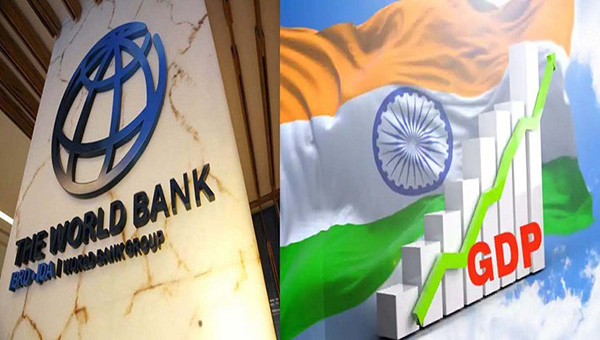 India has been projected to maintain its status as the fastest-growing economy among the largest emerging market and developing nations in terms of both aggregate and per capita GDP, according to the World Bank. The bank has retained its growth forecast for India at 6.3% for the fiscal year 2024.
India has been projected to maintain its status as the fastest-growing economy among the largest emerging market and developing nations in terms of both aggregate and per capita GDP, according to the World Bank. The bank has retained its growth forecast for India at 6.3% for the fiscal year 2024.
In its report titled “Global Economic Prospects,” the global development bank highlighted the resilience of private consumption, investment, and the services sector in India as key factors supporting growth in 2023. It predicts a slight pickup in growth until fiscal year 2026, with inflation moving back toward the midpoint of the tolerance range and reforms yielding positive results.
The World Bank acknowledged that private consumption in India was lower in early 2023 due to increased borrowing costs and higher prices, but manufacturing rebounded and investment growth remained strong, supported by increased government capital expenditure and rising corporate profits. Unemployment also decreased to 6.8% in Q1 2023, the lowest level since the start of the Covid-19 pandemic, while labor force participation witnessed a surge. The report noted that India’s consumer price inflation returned within the central bank’s tolerance band of 2-6%.
Recent data from the National Statistical Office showed higher-than-expected GDP growth of 6.1% in the March quarter and 7.2% for FY23. This positive data, along with optimistic indicators from high-frequency indicators, led analysts to revise their GDP growth projections for FY24 upward. SBI raised its forecast to 6.7% from 6.2%, while JP Morgan increased its projection to 5.5% from the previous 5%.
On a global scale, the World Bank expects a significant drop in global economic growth to 2.1% in 2023, following monetary policy tightening to curb inflation. However, a modest recovery to 2.4% is anticipated in 2024. The report emphasizes that global growth could be weaker than expected if there is widespread stress in the banking sector or if persistent inflation pressures lead to tighter-than-expected monetary policies.













